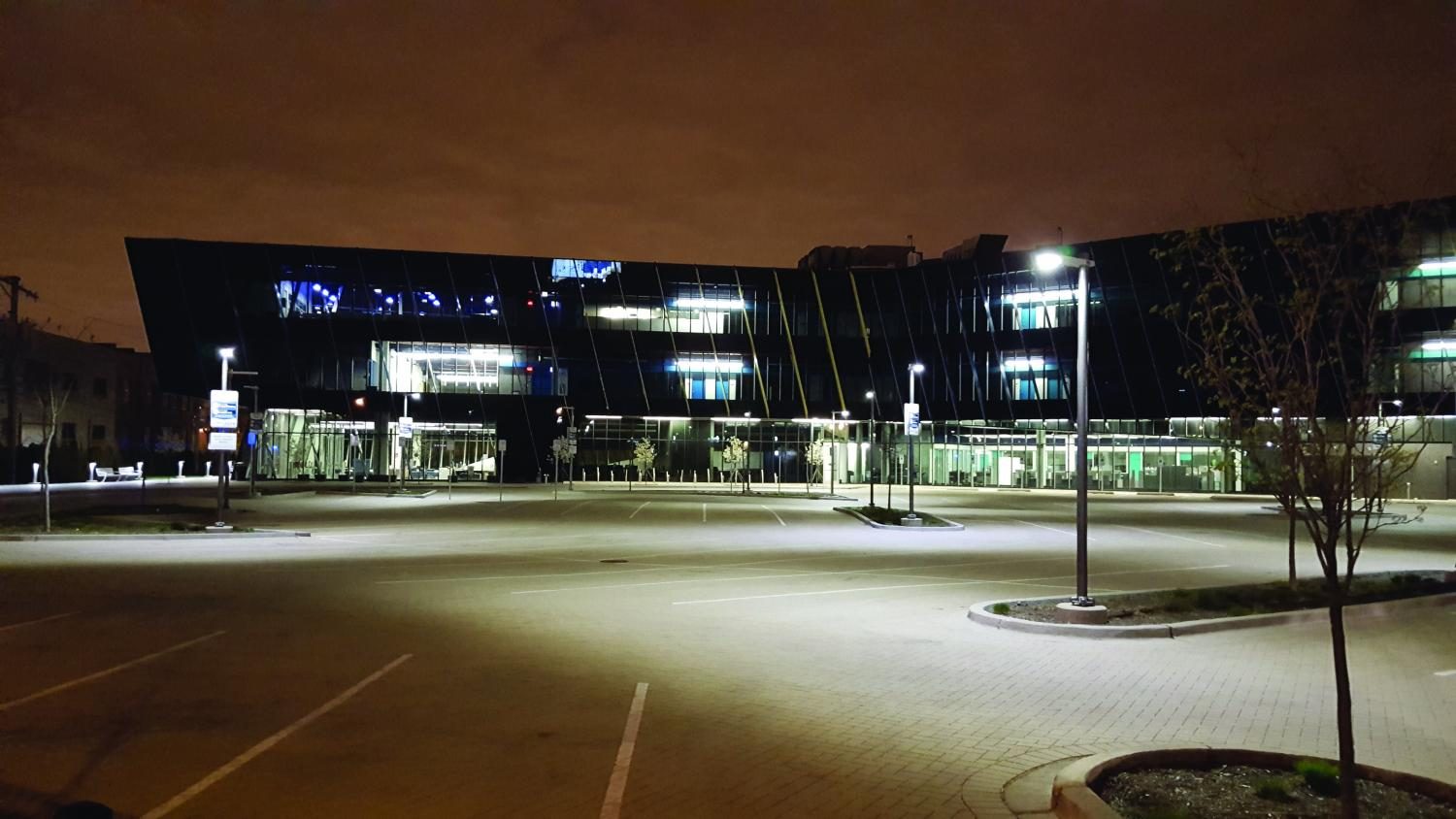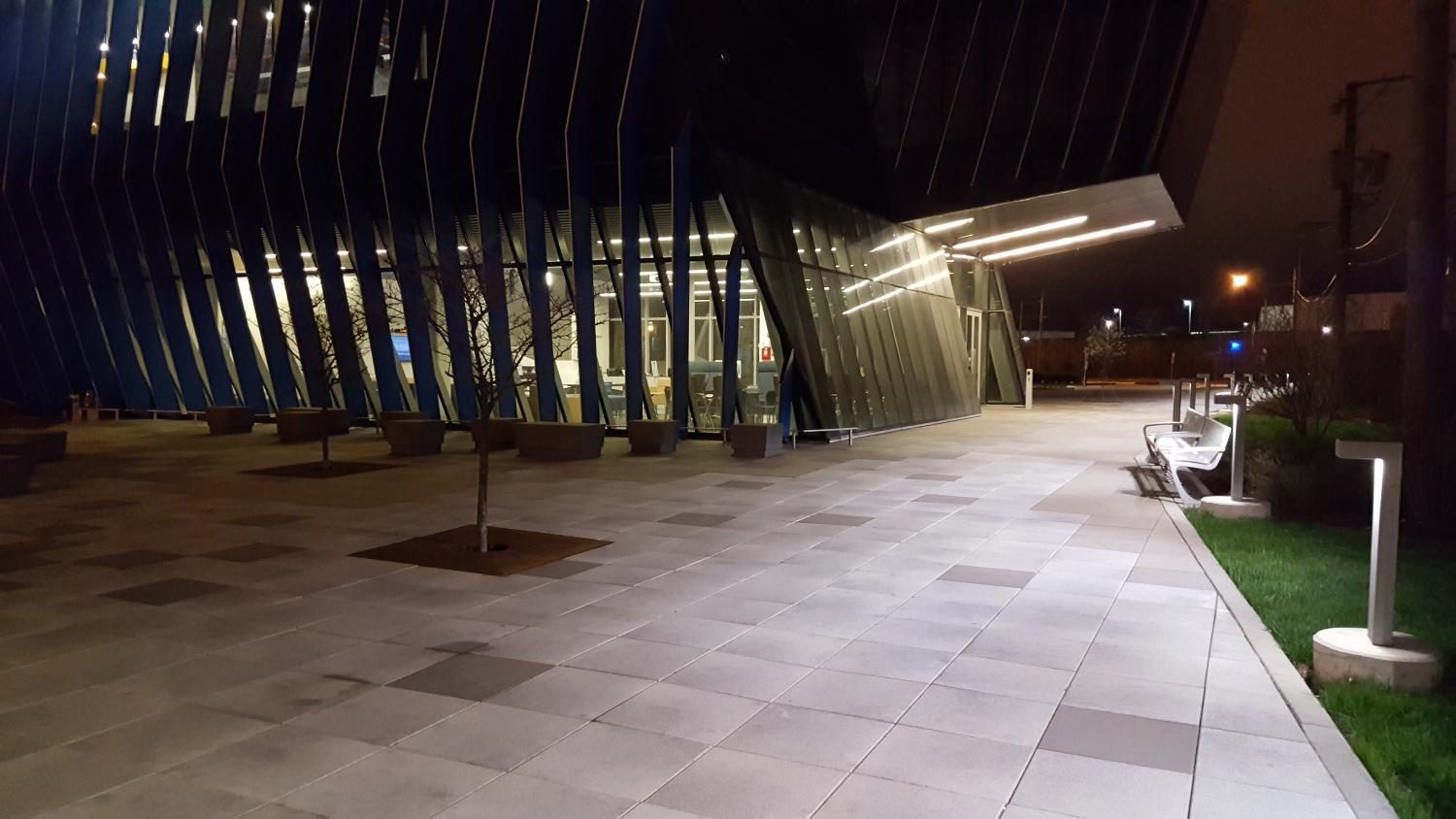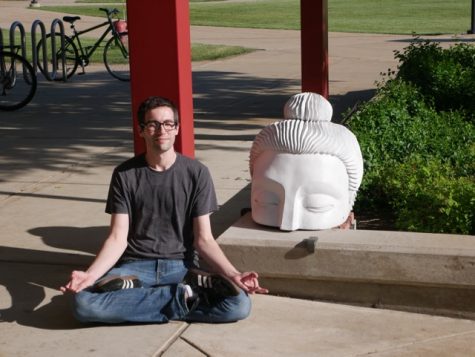Problems come to light at El Centro
The lights were left in the on position at the El Centro campus 24/7 over a two week period. There is no word yet how much this will cost the university.
April 29, 2017
In the midst of budgetary restrictions and furlough programs, there was a major malfunction with the lights at El Centro.
The lights were left stuck on day and night for about two weeks.
The malfunction was discovered at the end of March. Facilities Management sent electricians to assess the problem, who determined that the lighting program on the main lighting control panel had been deleted.
This can happen in the event of a power surge or failure but neither were reported.
The manufacturer’s authorized maintenance vendor was then contacted to reprogram the panel. The vendor was originally scheduled to come out on April 6 but was rescheduled to avoid interrupting the Board of Trustee’s meeting at El Centro that day, to April 13.
The replacement is not the same as the previous program so there are still a few bugs to work out. The remaining issue with the program is the bathroom lights.
At the moment, it is difficult to quantify how much this will cost the university.
“It has not been determined whether fixing or replacing or reprogramming the panel is covered by manufacturer’s or installer’s warranty,” said Michael Pierick, vice president of finance and administration. “If not, then the cost to the University will be determined and presented.”
The exact cost of this increase in energy usage for the two weeks, whether the warranty covers the service visit or not, is also not yet known.
Meanwhile, there are some budget items that may help NEIU lighten the financial impact of the budget impasse in Springfield, going forward.
The university has added the Nest residence hall and a pilot program for an inter-campus shuttle service this year.
A few years ago the university surveyed students who applied to NEIU but chose to attend other universities, to find out what made them choose the other school. One of the top reasons cited was a lack of a residence hall.
“The Nest has been an asset to the University.” Pierick said. “A residence hall option provides the opportunity to increase enrollment for groups like international students, students from other states and even students who have long commutes from other parts of Chicagoland.”
The agreements for development, funding and operation of the Nest specify that NEIU is responsible for achieving what is called break-even occupancy. This means that the university has guaranteed American Campus Communities, the developer and operator of the Nest, that a certain level of residency will be achieved.
If break-even occupancy is not reached, the university is responsible for the difference and has to essentially rent unoccupied units. However, in the first year of the residence hall, the break-even goal was met. Already, it looks as though the university will exceed break-even for the second year.
As occupancy increases beyond the break-even requirement, NEIU receives ground lease payments that increase along with it so the Nest is already making money for the university.
The staff are employed by ACC so aside from a slightly increased workload for Facilities Management and Student Affairs, no new staff had to be hired by the university.
However, there is a new pilot program being tested this semester that could provide Nest residents with on-campus employment opportunities if successful.
The NEIU Shuttle started running Feb. 21 and will operate every Tuesday, Wednesday and Thursday until May 4.
The goal of the program is to offer students an easier option for accessing the various campuses, to expand their course enrollment options.
It’s free to all NEIU students and links the main campus with El Centro and the Carruthers Center for Inner City Studies, with stops at the Kimball Brown Line station. Students must show a school ID when boarding as well as fill out an authorization form (which can be done online in less than a minute).
The drivers are NEIU students working part time and there are currently three drivers. The shuttle leaves the Nest at 8:00 a.m., making driving an ideal job for residents.
When determining the route schedule for this semester, there were two main factors: classes being offered at El Centro and CCICS, and traffic patterns.
The pilot program will continue until the end of the spring semester, at which point the program will be reevaluated for the fall semester. Since enrollment for summer courses is lower than spring and fall, the shuttle will not be offered during the summer semester.
“If there is a substantiated interest to keep (the program) moving, then we will develop what the fall will look like, based on the success of the pilot program,” said Kyle Burke, Director of Student Union and Event Coordination Services. “We will have some administrative discussions about the usage but I would like to have some student input.”
This may come in the form of a survey or a town hall meeting, shortly after the spring semester ends.
If this program is successful, the intention is to start promoting the service to highlight the registration options students would have available.
The projected program cost was estimated by Burke to be slightly more than $7,000 for ten weeks of this semester, operating three days of the week.
This covers the cost of the van rental and employing the drivers.
The estimated cost for a full semester is $10,000 and that number would increase if the service is extended to four or five days per week.
The funding for this program comes out of the student union fee that every student pays along with their tuition and other fees.
Even though Springfield doesn’t seem to have any intention of funding higher education, the university is already taking steps to drive enrollment in several ways. Malfunctions like the lighting at El Centro present new challenges for the administration but as long as enrollment continues to grow, the university will be able to navigate this financial crisis.










